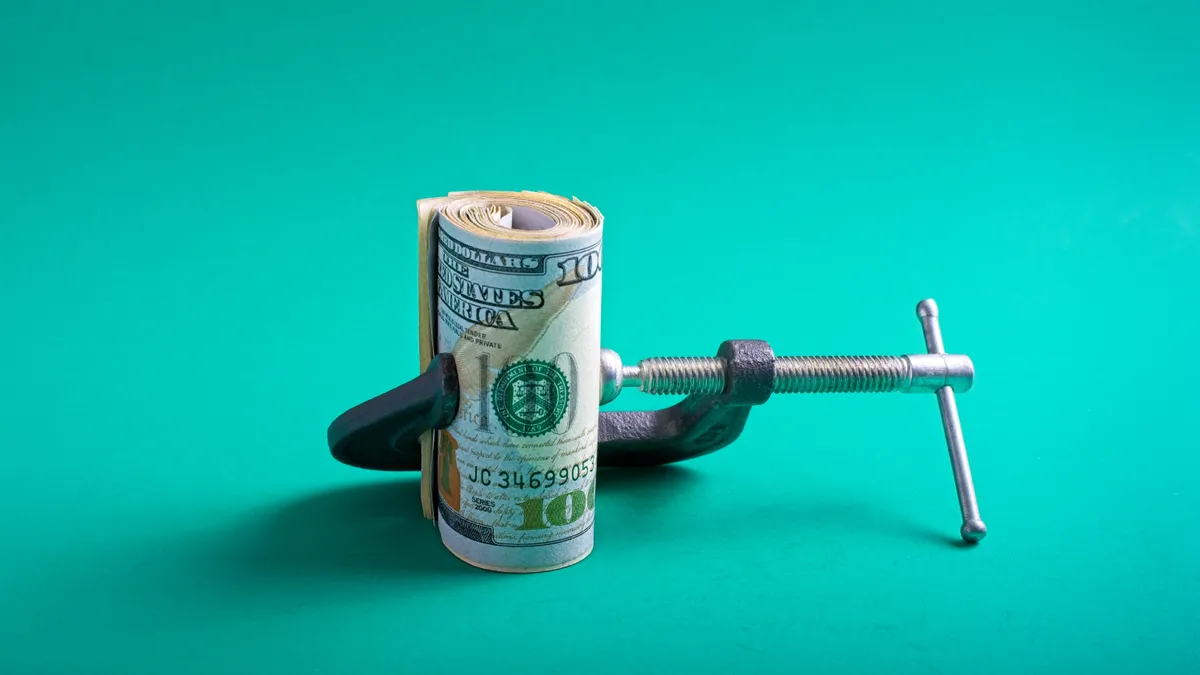Dive Brief:
- Inflation sped up last month, fueled by a surge in energy prices and the 40th consecutive monthly gain in shelter costs, the Labor Department said Wednesday.
- The consumer price index, driven by a 10.6% jump in gasoline prices, accelerated 0.6% in August compared with just 0.2% in both June and July. Core CPI, a less volatile gauge excluding food and energy, increased 0.3% last month compared with 0.2% in July. Shelter inflation, and a 4.9% increase in airline fares tied to rising fuel costs, pushed up the core rate in the first month-over-month increase since February.
- “Today’s core number raises the odds of a rate hike [by the Federal Reserve] next week, but not by much,” Pantheon Macroeconomics Chief Economist Ian Shepherdson said in an email to clients. “We expect the Fed to remain on hold, but to signal willingness to hike again depending on the data.”
Dive Insight:
Traders in interest rate futures shrugged off the report of faster inflation, setting 97% odds that the Fed after a two-day meeting on Sept. 20 will hold the federal funds rate at the current level, according to the CME FedWatch Tool. On Tuesday they saw 92% odds that the central bank will stand pat.
The Fed in July raised the benchmark interest rate to a range between 5.25% and 5.5%, a 22-year high. The central bank paused monetary tightening in June to assess the impact from 10 consecutive hikes since March 2022.
Fed policymakers in a June forecast penciled in one more quarter-point increase, with their median estimate indicating a 5.6% federal funds rate by the end of 2023.
Futures traders predict a different outcome, setting a 55% probability that the main interest rate will end the year at its current level.
Shepherdson said he sees just a 25% chance of another rate hike, and predicts that annual core inflation will ease by the spring to less than 3% from 4.3% last month. The Fed has pledged to reduce inflation to its 2% target.
“The month-to-month [inflation] numbers will inevitably hop around, with a bump starting in October due to the annual adjustment in health insurance costs, plus likely volatility in used vehicle prices and airline fares,” he said. “But the pace of rent increases is set to step down again, so the core numbers overall should look benign.”
Price pressures have eased during the past year as the economy overcame clogged supply chains and other pandemic-induced shocks, Ed Yardeni, president of Yardeni Research, said Wednesday in a research note.
“The boom in the demand for goods following the lockdowns has turned into a bust, forcing retailers to cut the prices of their merchandise to clear unintended inventories,” Yardeni said. “Services inflation has been stickier, but it should moderate significantly in coming months reflecting lower rent and wage inflation rates.”
Indeed, average hourly earnings adjusted for inflation rose in August on an annual basis by 0.5% in the second straight month of slowing earnings growth, the Labor Department said Wednesday. Real wages rose 1.3% in June and 1.1% in July.
Shelter prices, the biggest component in services, surged 7.3 percent in August on an annual basis, accounting for more than 70 percent of the total increase in core CPI, the Labor Department said.
The cost of motor vehicle insurance, an item in the service category, rose 2.4% in August for a 19.1% annual gain — the highest yearly increase since 1976. Airline fares rose after plunging 8.1% in both June and July.















